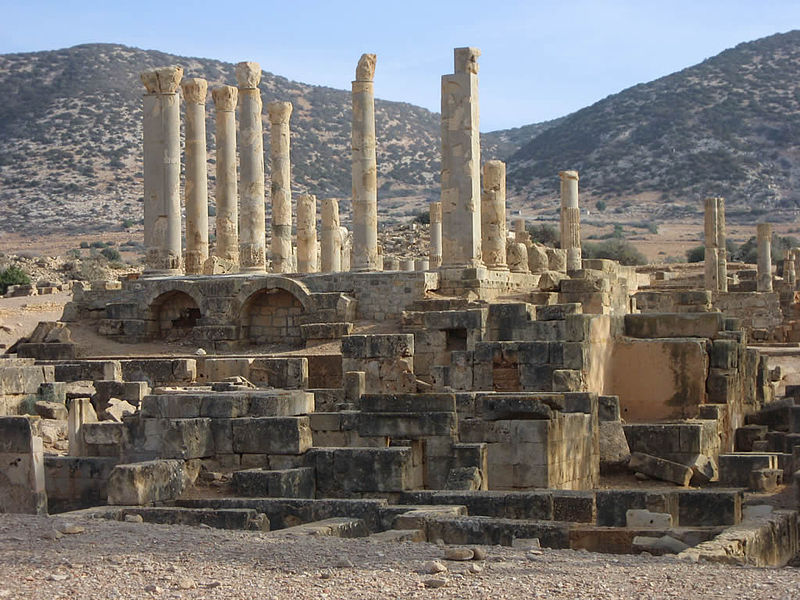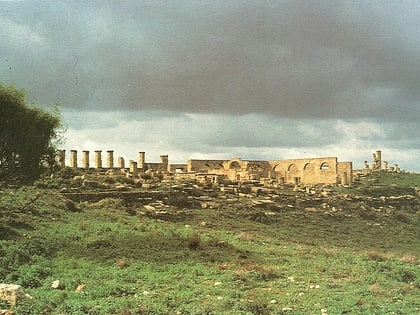Ptolemais


Facts and practical information
Ptolemais, situated in the Cyrenaica region of Libya, stands as an evocative testament to the ancient world's architectural and cultural grandeur. This archaeological site, once a prominent city in the Hellenistic period, offers a window into the past, revealing the intricate blend of Greek and Roman influences that shaped the Mediterranean's historical landscape.
Founded by the Greeks in the 4th century BC, Ptolemais became an integral part of the Ptolemaic kingdom, reflecting the era's opulence and the strategic significance of the region. The city flourished under Roman rule, as evidenced by the remnants of its grand public buildings, villas adorned with intricate mosaics, and the imposing theater that once echoed with the voices of performers and spectators alike.
The site is particularly renowned for its well-preserved basilicas, which serve as a testament to the early adoption of Christianity in the area. The ruins of Ptolemais include public baths, streets lined with colonnades, and an acropolis, all narrating the story of a bustling metropolis that was once at the crossroads of commerce and culture.
Despite the ravages of time and the challenges of preservation, Ptolemais continues to be a focal point for archaeologists and historians seeking to unravel the mysteries of the ancient world. Its strategic location along the Mediterranean coast not only made it a vital center for trade but also a melting pot of ideas, religions, and artistic expressions.
Al Marj
